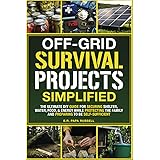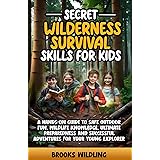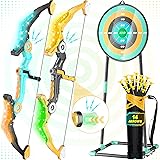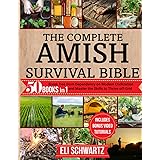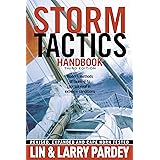Choosing Your Wilderness Survival Guns: A Strategic Guide for Outdoor Preparedness
Venturing into the great outdoors offers unparalleled experiences, yet it also presents unpredictable challenges. When an outing takes an unexpected turn, transforming into an unintended overnight stay under adverse conditions, having the right gear becomes paramount. While the accompanying video delves into specific firearms the speaker would choose for such scenarios, this article will expand on the critical considerations for selecting your personal wilderness survival guns, offering deeper insights into their roles, practical applications, and the strategic thinking behind each choice.
The concept of “wilderness survival” can be broad, but as defined in the video, it specifically refers to five key elements: being in the field, under adverse conditions, when you have not intended to spend the night, when you have to spend the night (or multiple nights), and when you were not prepared to do so. This definition underscores the importance of being ready for the unexpected, whether it’s a sudden change in weather or an unforeseen delay that extends your time away from civilization.
Understanding the Landscape of Wilderness Survival
Before selecting any gear, it’s crucial to understand the context of a true survival situation. Imagine you’re deep in a national forest, far from established campgrounds, when a sudden blizzard descends, dropping temperatures to 20 degrees Fahrenheit and covering the ground in six inches of snow. This stark contrast from a mild 50-degree summer night illustrates the “adverse conditions” that transform a simple hike into a genuine survival test.
The speaker’s five crucial tips for wilderness survival, though briefly mentioned, lay a solid foundation for preparedness. These include proactive planning to avoid hazardous situations, cultivating self-knowledge and seeking continuous improvement, packing according to one’s skills, avoiding overpacking, and ensuring all essential gear is consolidated for easy access. These principles, when applied diligently, significantly enhance your ability to navigate unforeseen challenges, making your choice of survival firearms a part of a larger, well-considered strategy.
The Multifaceted Role of Firearms in Wilderness Survival
A firearm in a survival scenario serves more than just one purpose. Its utility extends across several critical areas, each demanding different characteristics from the chosen weapon. The three primary roles include defense against threats, acquiring food, and signaling for help. Balancing these needs requires careful consideration of various firearm types and calibers.
In many remote areas, the threat from large predatory animals, such as bears or cougars, can be a concern, although it varies significantly by region. However, a more pervasive threat, even in seemingly isolated environments, often comes from other humans. Additionally, the ability to procure sustenance through hunting small game is a fundamental aspect of long-term survival. Finally, the capacity to attract attention during an emergency through signal shots can be a literal lifesaver.
Procuring Sustenance: From Big Game to Small Game
When most people think of hunting in the wilderness, large game often comes to mind. A powerful rifle like the Marlin Model 1895 CB in .45-70 caliber, known for its ruggedness and accuracy, is an excellent choice for hunting deer or elk. With a typical capacity of 9+1 rounds, it can handle significant threats. However, as the video vividly demonstrates, using such a high-powered firearm for smaller game like squirrels or rabbits can lead to literal “disintegration,” leaving little to eat.
This highlights a common dilemma: while a large caliber rifle is ideal for big game, it’s often impractical for the small game that is far more abundant and likely to be encountered in a survival situation. A .45-70 round, for instance, might leave nothing but scattered fragments of a squirrel, negating the purpose of the hunt. This problem underscores the need for versatility in a survival kit.
The Indispensable .22 Long Rifle: Small Caliber, Big Impact
To address the challenge of hunting small game effectively, the .22 long rifle (.22LR) caliber emerges as a standout choice. This small, lightweight round is perfect for squirrels, rabbits, and upland game birds. The video showcases the effectiveness of a .22LR handgun, like the Ruger Mark III or the Beretta M9-22, in taking down a “rabbit target” with precision, ensuring edible remains. Accuracy tests conducted at 20 yards reveal impressive performance: the Mark III achieved 8 hits out of 10, and the M9-22 secured 9 hits out of 10, demonstrating their viability for putting food on the table.
For those carrying a large caliber hunting rifle, supplementing it with a small caliber handgun is a practical strategy. This approach provides the flexibility to handle both big and small game without compromising the integrity of the latter. Alternatively, a smooth-bore shotgun, often carried for hunting deer with buckshot or slugs, can be paired with a pocketful of birdshot shells to expand its utility for smaller targets, offering a different kind of versatility in the field.
Balancing Power and Portability: The Survival Rifle
Beyond handguns, a small caliber rifle like the Ruger 10/22 Takedown model offers exceptional advantages for wilderness survival. Its light weight, minimal ammunition bulk, and ease of operation make it a superb choice. Crucially, its “takedown” feature allows it to be disassembled and packed away, making it incredibly portable for hikers or those who prioritize a compact carry. The video’s demonstration of 10 out of 10 hits on a rabbit target at 25 yards reinforces its accuracy and reliability, establishing it as a top-tier option for a survival rifle.
The .410 Shotgun: A Compact Contender?
Another compact firearm often considered for survival is the .410 bore shotgun, exemplified by the Mossberg Model 510. Its small size, light weight, and less bulky ammunition compared to 12-gauge make it an attractive option for portability. While not the speaker’s personal favorite .410, its convenience for carry is undeniable. The critical question, however, is its effectiveness.
For hunting small game, the standard often cited is six pellets of birdshot for an effective hit. Live-fire tests with the Mossberg 510 at 25 yards, using Federal .410 three-inch 7 1/2 lead birdshot, demonstrated consistent results, with at least 14 to 15 pellets impacting the rabbit target. This performance indicates that the Mossberg 510 can be effective at 30 yards or more, proving its worth for small game hunting in a survival scenario.
The Taurus Judge: A Cautionary Tale
However, not all .410 platforms are created equal. The Taurus Judge revolver, despite being chambered for .410 shells, presents a stark contrast in practical effectiveness. Live-fire results from the video showed abysmal performance: one shot at 25 yards yielded only a single pellet hit on the target, with subsequent shots barely improving. Even at a mere 10 yards, the Judge proved largely useless for effectively delivering birdshot. This illustrates a crucial point: chambering a round does not guarantee its effective deployment, especially with shot patterns from short-barreled revolvers.
Self-Defense: Protecting Against All Threats
While procuring food is vital, self-defense remains a paramount concern in wilderness survival. This includes protection against dangerous animals and, perhaps more commonly, against human threats. The speaker emphasizes that in many remote areas, the danger from criminals is a very real consideration, even if large animal encounters are minimal. Therefore, a wilderness survival gun must offer a balance between all potential roles.
Moderate to powerful handguns, such as the Beretta 92FS or the Sig Sauer M17, both in 9×19 caliber, are excellent choices for self-defense. These firearms offer a combination of moderate caliber power, reliability, accuracy, and good capacity, often with the ability to carry multiple extra magazines. Their robust design ensures they can withstand adverse conditions, providing a reliable defense when needed most.
The Art of Concealment: When Discretion is Necessary
There are situations where carrying a firearm is desired, but discretion is equally important. The anecdote about the camping trip highlights a common social dynamic where the overt display of a firearm can create tension or even hostility. In such instances, a small, concealable firearm becomes a necessary compromise, even if it entails certain ballistic and accuracy trade-offs.
Compact pistols like the Ruger LCP, Smith & Wesson Model 638, or the Sig Sauer P365 (in 9×19 caliber) are designed for easy concealment. While smaller handguns can pose challenges to accuracy for some shooters, the video demonstrates that a reasonable level of effectiveness can still be achieved. For example, the LCP 22 achieved 7 hits out of 10 at 20 yards, and the Sig P365 proved reasonably effective at 15 yards on a reactionary target. However, the shorter barrels of these compact .22LR firearms can lead to a significant loss in bullet velocity, potentially causing hollow point ammunition to fall below its expansion threshold, making hits less decisive.
The Sig Sauer P365 stands out in this category. It’s light, compact, and offers good capacity, often coming with 10-shot magazines and having 12-shot options readily available. For a striker-fired firearm with a relatively light trigger pull, the speaker advises considering a model with a manual safety for pocket carry, prioritizing safety in its compact form. The choice between a smaller, more powerful revolver like the S&W 638 and an auto-loader like the LCP often comes down to personal preference for power, accuracy, and reload speed.
Signal Shots: A Lifesaving Call for Help
Beyond defense and sustenance, a firearm can be a vital tool for signaling for help. The universally recognized distress signal is three evenly spaced shots. The timing of these shots is crucial: they must be slow enough to be distinct but fast enough to be perceived as a continuous string. Firing too quickly or too slowly diminishes their effectiveness. A cadence like “one… two… three…” with clear pauses allows the sound to echo and be clearly interpreted as a signal, even over long distances.
To maximize attention, especially in remote areas, shooting signal shots in the dark can be particularly effective. While regulations vary by jurisdiction, firing three signal shots at night, particularly during hunting season, is almost guaranteed to attract attention – though it might be from law enforcement rather than direct rescuers. Regardless, it initiates contact, which is the primary goal in a dire survival situation. However, as the speaker painfully recounted, there are specific circumstances where signal shots might not be an option, and the complexities of real-world survival often defy simplistic “coulda, woulda, shoulda” advice.
Crafting Your Personal Wilderness Survival Strategy
Ultimately, the choice of wilderness survival guns is a deeply personal one, influenced by your specific environment, potential threats, and individual skill level. Whether you opt for the raw power of a large hunting rifle, the precision of a small-caliber rifle, the defensive capability of a full-size handgun, or the discreet utility of a compact pistol, each firearm plays a distinct role.
The key lies in understanding the strengths and limitations of each option, practicing regularly to ensure proficiency, and integrating your chosen firearms into a broader, well-thought-out survival plan. Preparedness is not about owning the most guns, but about possessing the right tools for the job, understanding their effective application, and having the knowledge and discipline to use them wisely when survival hangs in the balance.


